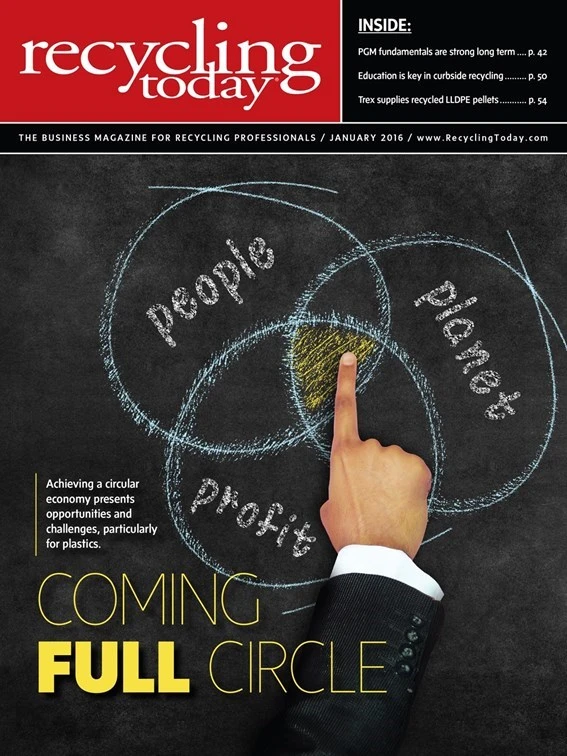The holidays have not slowed down generation of plastic scrap, generally speaking, with a reprocessor based in the Southeast saying it appears to be on par and perhaps even higher than in years past. She adds that generation seems particularly strong from the automotive and commodity goods sectors.
“But, on the flip side, many of the compounders who sell into automotive are not buying much, which I find to be peculiar,” the reprocessor says.

A Midwest-based material recovery facility (MRF) operator serving residential and commercial customers characterizes generation as steady. “Certain materials are slightly higher,” he continues, “such as PVC (polyvinyl chloride) pipe and siding and HDPE (high-density polyethylene) pipe.”
While generation of PVC scrap is high, domestic demand does not correspond, with the MRF operator describing it as poor.
However, he characterizes demand from domestic buyers of polyethylene (PE) and polypropylene (PP) as good.
The reprocessor based in the Southeast says, “Demand seems strong for commodity grades,” adding that she’s seeing seasonal buying related to consumer goods manufacturing and the agricultural and construction sectors.
“I think there was some pent-up demand from November, which seemed uncharacteristically slow,” the reprocessor says.
“But I fully expect the holiday slowdown to commence mid-month,” she says, referring to December.
The MRF operator says demand for recycled PE and PP is good as of December. “Most manufacturers using these grades are running well and requiring material supply.
“For example,” the MRF operator continues, “a lot of natural HDPE dairy bottles are used in making artificial lumber, from decks to sheeting to picnic tables. This activity has not subsided much, and there is still good pricing for natural HDPE dairy bottle scrap.”
However, demand is not as strong for engineering grades, the reprocessor says.
“I think there was some pent-up demand from November, which seemed uncharacteristically slow.” – a reprocessor based in the Southeast
Regarding export demand, the MRF operator describes it as “almost nonexistent.”
With the majority of LDPE (low-density polyethylene) and LLDPE (linear low-density polyethylene) recovered in the U.S. being exported, it will come as no surprise that pricing and demand are soft for these materials in light of the disinterest overseas buyers are showing, the MRF operator says. He adds that domestic buyers are taking advantage of the price decline to purchase these materials.
In other plastics news, in mid-December the U.S. Senate passed the Microbead-Free Waters Act of 2015. The bipartisan bill, sponsored by U.S. Sens. Rob Portman and Kirsten Gillibrand, is identical to the version the House passed Dec. 7, 2015, and provides a time frame for the removal of plastic microbeads from over-the-counter (OTC) and personal care products.
The American Chemistry Council, headquartered in Washington, says the legislation “is an important step to ensure we have one sensible, national standard for phasing out the use of solid plastic microbeads in personal care products across America.”

Explore the January 2016 Issue
Check out more from this issue and find your next story to read.
Latest from Recycling Today
- Aqua Metals secures $1.5M loan, reports operational strides
- AF&PA urges veto of NY bill
- Aluminum Association includes recycling among 2025 policy priorities
- AISI applauds waterways spending bill
- Lux Research questions hydrogen’s transportation role
- Sonoco selling thermoformed, flexible packaging business to Toppan for $1.8B
- ReMA offers Superfund informational reports
- Hyster-Yale commits to US production





